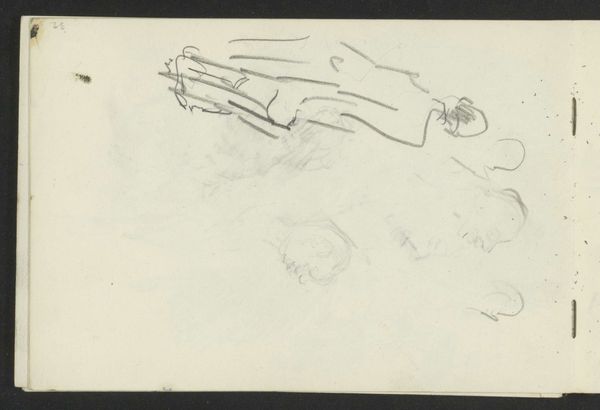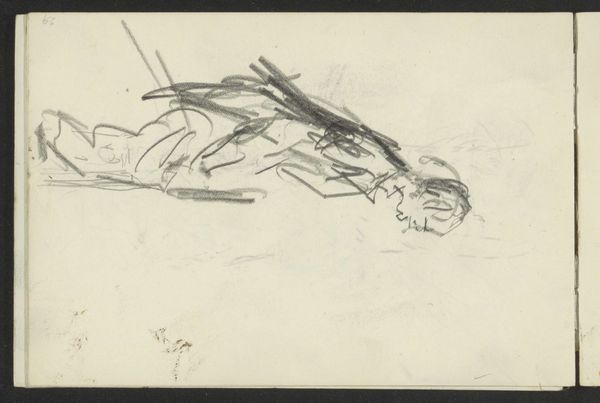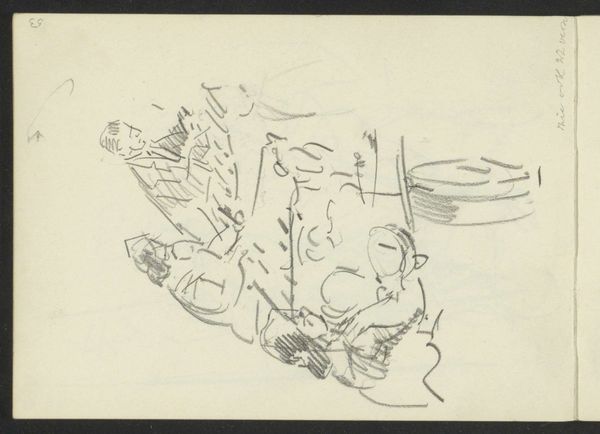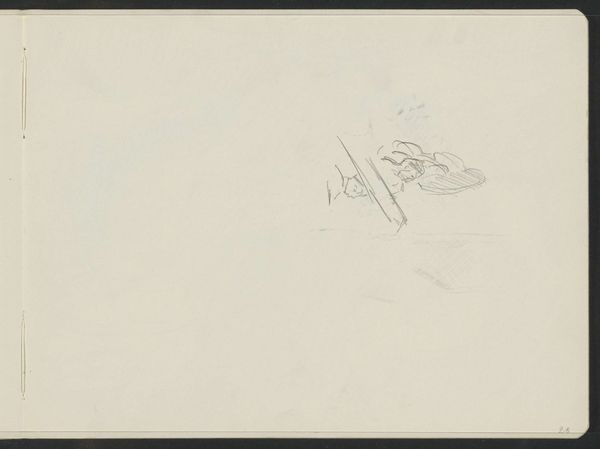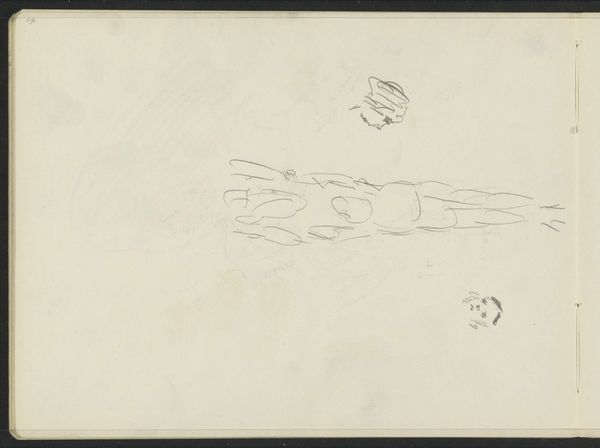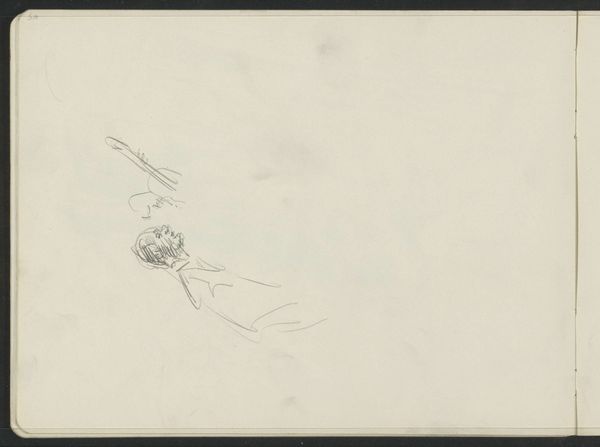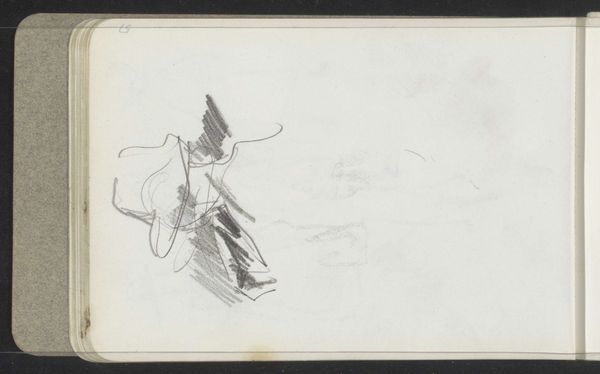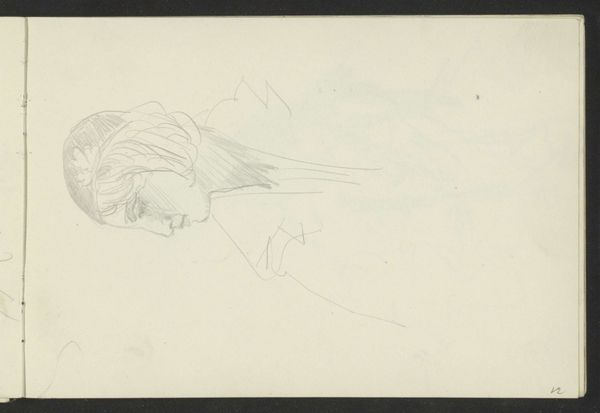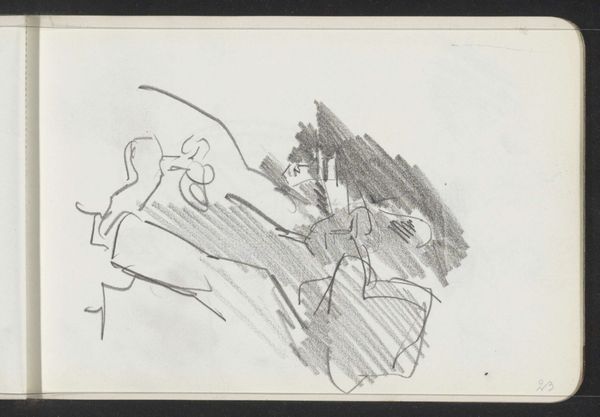
#
quirky sketch
#
pen sketch
#
hand drawn type
#
personal sketchbook
#
idea generation sketch
#
pen-ink sketch
#
thin linework
#
sketchbook drawing
#
sketchbook art
#
profile
#
initial sketch
Copyright: Rijks Museum: Open Domain
Curator: This is "Mannenhoofden, in profiel" or "Men's heads, in profile" by Isaac Israels, made sometime between 1875 and 1934. It's a pen and ink sketch, currently held here at the Rijksmuseum. Editor: My initial reaction? A fleeting thought captured. Almost like eavesdropping on someone's mental landscape. I feel like the artist was trying to pin down something elusive. Curator: Israels was known for his quick, impressionistic style. This piece, likely from a sketchbook, is a perfect example. Notice the minimal lines he uses to suggest form and character. It feels intimate, immediate, as if we are right there with him as he observes these men. Considering the era, are we looking at early candid portraits or something more ethnographic? Editor: Well, Israels, like many of his contemporaries, moved in complex social circles, benefiting from the legacy of colonialism while also engaging with burgeoning social movements. Who these men were and the nature of Israels’ gaze is key here. Was this a respectful study or something else? The rapid execution could signify either urgency or a detached observation. And given Israels' status, the sketch raises questions of power dynamics at play. Curator: It’s hard to say definitively without more context, isn't it? I think it resonates with a kind of unfinished quality that gives the drawing a vibrant energy, however. Look how little ink he used, a perfect moment that you have to consider to appreciate the artistry on display. To think that was how the artwork was conceptualized in the beginning... Editor: Absolutely. This drawing could become an allegory to late 19th century rapid social change itself! Perhaps its incompleteness IS its commentary. What stories are not being fully told about the working class? It speaks to art's role in recording and sometimes obscuring social realities. Curator: Yes, and it’s through conversations like this that these works come alive, taking on new meanings as we unpack them. Thank you. Editor: My pleasure. There's always more to consider and discuss!
Comments
No comments
Be the first to comment and join the conversation on the ultimate creative platform.



